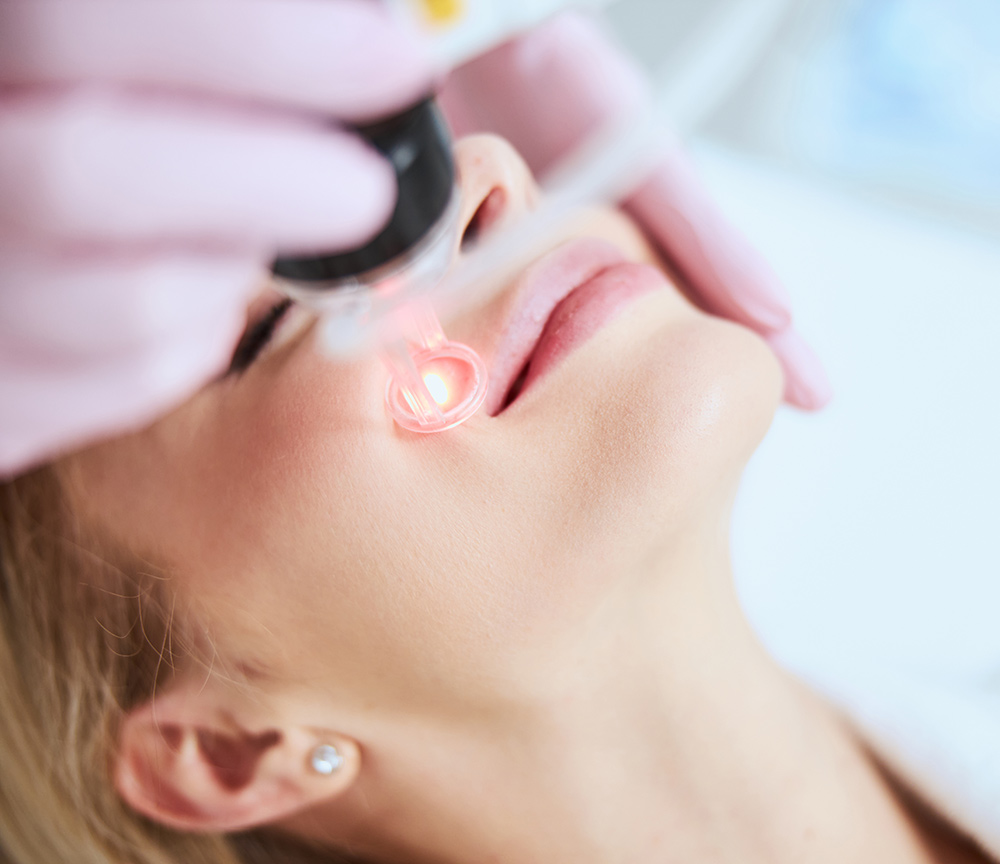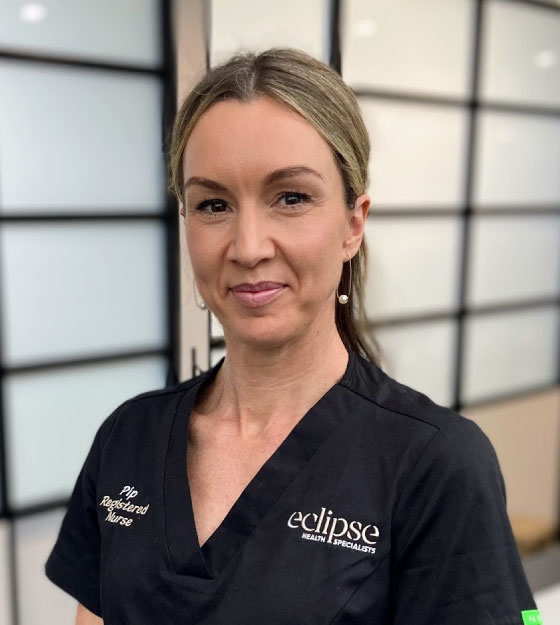Melasma, sometimes referred to as chloasma, is a form of skin pigmentation that appears as symmetrical patches of brown or grey-brown colour on areas regularly exposed to sunlight. These patches are most often found on the cheeks, forehead, upper lip and nose, developing when skin cells produce excess melanin.
Although melasma is harmless, it can lead to uneven skin tone and may become more prominent over time. At Dr Queenie Chan’s clinic, we provide professional melasma treatment options aimed at reducing the appearance of pigmentation and supporting a more balanced complexion.
What Is Melasma?
Melasma presents as brown or grey-brown patches on areas such as the cheeks, forehead, upper lip and nose. These patches occur when the skin produces excess melanin in certain areas, resulting in visible discolouration. The condition is more common in individuals with medium to darker skin tones, but it can affect anyone. It is not harmful, but for many people, it is a noticeable and persistent change in their skin’s appearance.

What Causes Melasma?
Several factors may contribute to melasma developing or worsening:
- Sun exposure: Ultraviolet (UV) radiation stimulates melanin production, deepening existing pigmentation.
- Hormonal changes: Pregnancy, oral contraceptives and hormone therapy are common triggers.
- Genetic predisposition: A family history of melasma may increase susceptibility.
- Skin type: Medium to darker complexions are more prone to pigmentation changes.
- Heat and light exposure: Not just UV rays, but visible light and heat can also influence pigment activity.
Struggling with Melasma?
Book a Consultation with Dr Queenie Today?
Tips to Help Manage and Prevent Melasma
While complete prevention may not be possible, certain measures can help reduce flare-ups and maintain treatment results:
- Daily sun protection: Apply a broad-spectrum mineral based SPF 50+ sunscreen every day, regardless of the weather. Reapply every 2 hours. A small amount of exposure as little as 10mins may reverse the treatment effects of melasma
- Protective clothing: Wear hats and sunglasses to shield your face from direct sunlight.
- Avoid unnecessary heat exposure: Limit time in saunas, hot yoga, or environments with high radiant heat.
- Skincare routine: Use products recommended by your skin professional that support gentle skin renewal and barrier health.
- Avoid skin irritation: Harsh scrubs or products can aggravate pigmentation.
Melasma Treatment Options
Topical creams such as azelaic acid and hydroquinone and vitamin C creams are recommended. Discontinue if you do not see any improvement after 2-3 months. There are some side effects associated with the use of hydroquinone. Consult a healthcare professional if you have any concerns.
Laser
Lasers such as Pico and Nano lasers use non-ablative laser technologies to address excess pigmentation in targeted skin layers. For melasma, settings are adjusted to reduce heat impact while promoting gradual skin renewal, supporting a more even skin tone. Intense Pulsed Light treatment (IPL) should be avoided in melasma as it may worsen the condition.
Chemical Peel
Chemical peels such as AHA and glycolic peels for melasma are selected to exfoliate the upper skin layers where excess pigmentation is concentrated. This controlled resurfacing process encourages new, evenly pigmented skin cells to replace older, discoloured ones. Multiple sessions may be recommended for optimal results.
Oral treatment
Medications such as oral tranexamic acid have an important role in the maintenance and prevention of melasma recurrence. Consult a healthcare professional to make sure this is the right treatment for you.
Melasma Treatments at Our Clinic
At Dr Queenie Chan’s clinic, all melasma treatment plans are tailored to the individual. Following a comprehensive skin assessment, our healthcare professionals select the most suitable procedure or combination of treatments, with a focus on supporting long-term skin health and minimising the risk of recurrence.
Consultation
A thorough consultation allows us to assess your skin type, pigmentation pattern and contributing factors. This step ensures that your melasma treatment is planned with precision and aligned with your specific needs.
Procedure
The choice of procedure depends on the depth and distribution of pigmentation, skin sensitivity and your overall treatment goals. Each treatment is performed using settings and techniques suited to melasma management, aiming to improve tone gradually and safely.
Results
Melasma treatments typically result in a more even skin tone and reduced visibility of pigmented patches. Results vary depending on skin type, adherence to sun protection and maintenance care. As melasma can be recurrent, ongoing preventive measures are important.
Recovery
Most melasma treatments have minimal recovery time, although some temporary redness, mild swelling, or dryness may occur. These effects usually resolve within a few hours to a few days, depending on the treatment performed.
Possible Risks or Side Effects
While generally safe when performed by trained professionals, melasma treatments may occasionally result in:
- Mild redness or swelling
- Temporary darkening before lightening (post-inflammatory response)
- Rare changes in skin texture or tone
Following aftercare advice and sun protection recommendations, which will be discussed during your consultation, helps to minimise risks.

Why Choose Us for Your Melasma Treatment?
Melasma requires a careful and informed approach to achieve improvement without aggravating pigmentation. At Dr Queenie Chan’s clinic, your treatment plan is guided by a thorough skin assessment and a clear understanding of your skin type and triggers.
We use evidence-based techniques and carefully selected technologies, including laser and chemical treatments, with settings adjusted specifically for melasma management. Each procedure is tailored to target excess pigmentation while maintaining the overall health of your skin.
Meet The Team

Pip Pitson – Aesthetic Practice Nurse
Pip is here to look after your aesthetic concerns. Whether it is anti-wrinkle, filler injections or radiofrequency skin rejuvenation treatments you are after, Pip will be able to guide you through the myriad of options and provide you with a comprehensive skin care program that works for you. Pip also has a background in burns, plastics and reconstructive surgery nursing and enjoys anything wound related.
Ash Birrell – Dermal Therapist
Ash Birrell is an experienced dermal therapist with a special interest in treating a wide range of skin concerns. Her areas of expertise include pigmented lesions, scarring, rosacea, acne, and anti-ageing treatments. With a personalised, evidence-based approach, Ash is passionate about helping clients achieve clearer, healthier, and more radiant skin. She is known for her caring nature, attention to detail, and commitment to delivering natural-looking results through advanced, non-invasive skin therapies

How to schedule a consultation
To book an appointment, please call us on 02 6059 0612, email us at ash.thedermalclinician@gmail.com or practicenursepip@gmail.com or book online here.
FAQs
What causes melasma on the face?
Melasma develops when skin cells produce excess melanin, often triggered by sun exposure, hormonal changes, or genetic factors. It is more common in areas regularly exposed to sunlight, such as the cheeks, forehead and upper lip.
How can I get rid of melasma on my face?
Treatment options for melasma include targeted laser treatments, chemical peels and topical care to gradually lighten pigmentation. A tailored approach is important to minimise the risk of recurrence.
Can laser treatment remove melasma permanently?
Laser treatments can reduce the appearance of melasma, but the condition may return if triggers such as sun exposure or hormonal changes persist. Ongoing prevention and maintenance are key to long-term results.
Is a chemical peel good for melasma?
Chemical peels can help lighten melasma by removing surface layers of pigmented skin. The type and strength of peel will be chosen based on your skin type and condition.
Does melasma come back after treatment?
How long does melasma treatment take to work?
Visible improvement can occur within a few weeks to months, depending on the type of treatment and severity of pigmentation. Multiple sessions are often recommended to achieve the best results.
- *This article is not intended to be used for diagnosis or treatment. It is aimed at presenting a perspective only and is not a substitute for a clinical assessment. Anyone experiencing a medical condition should consult their doctor.
